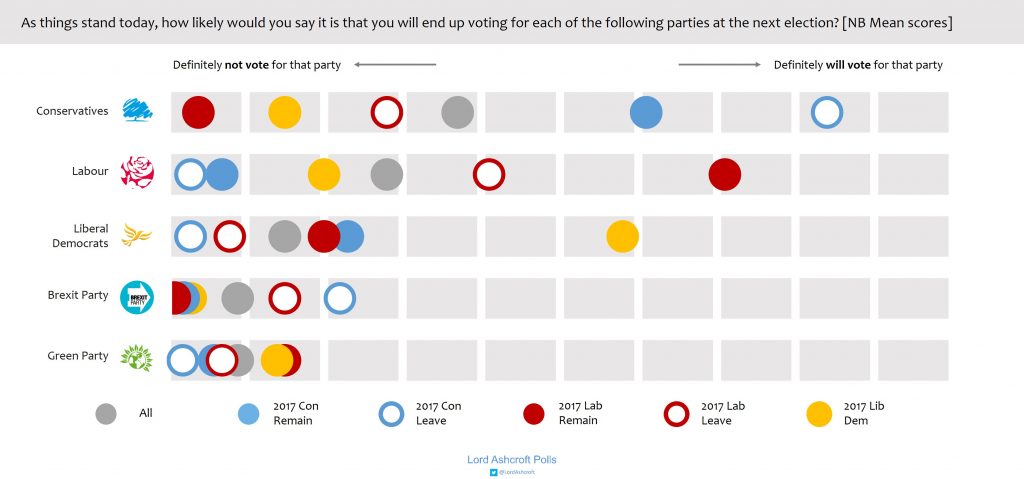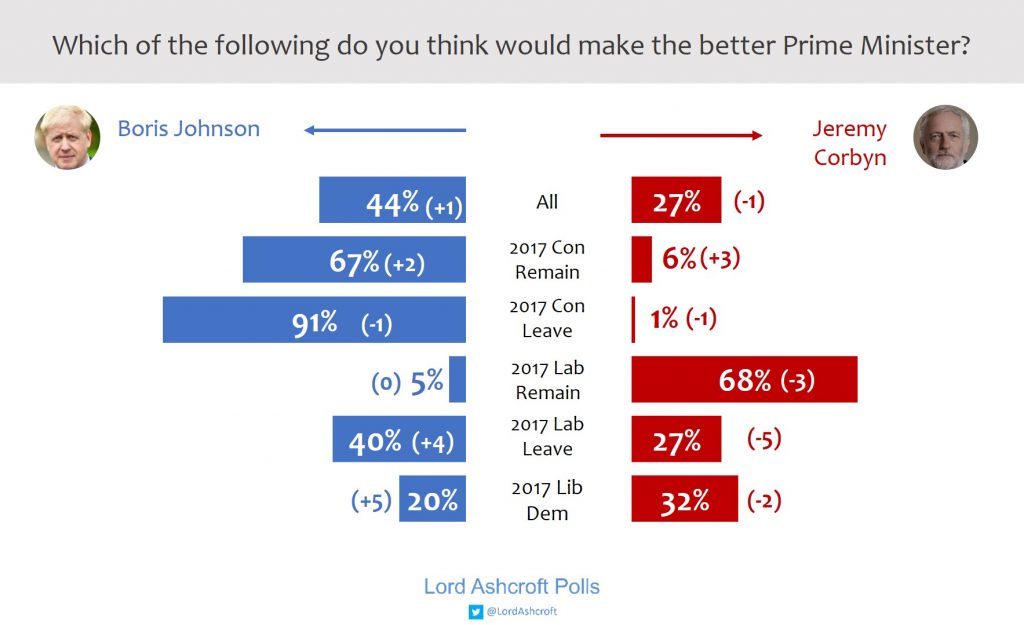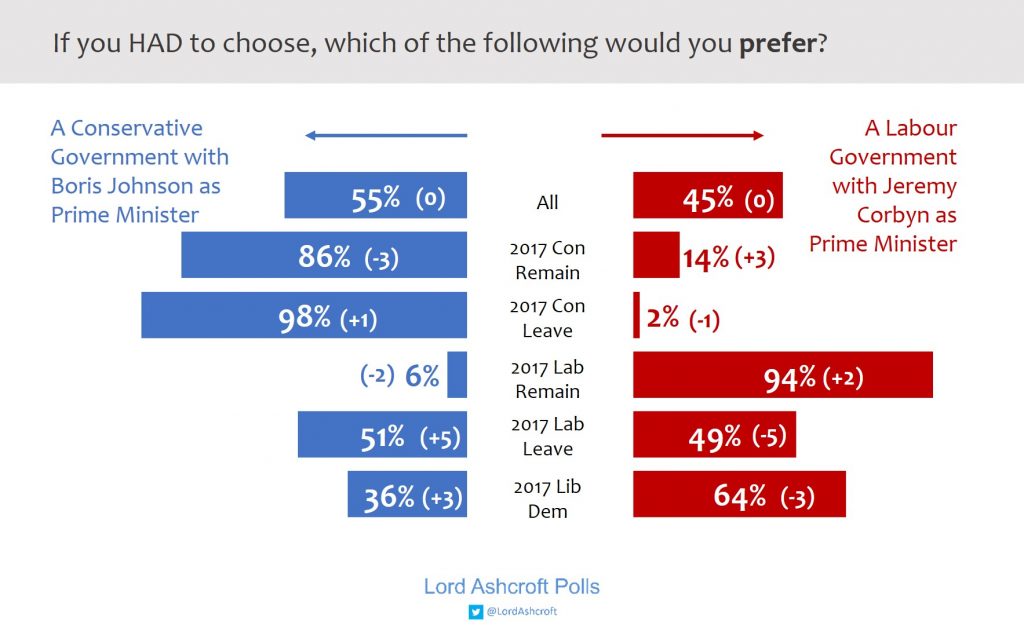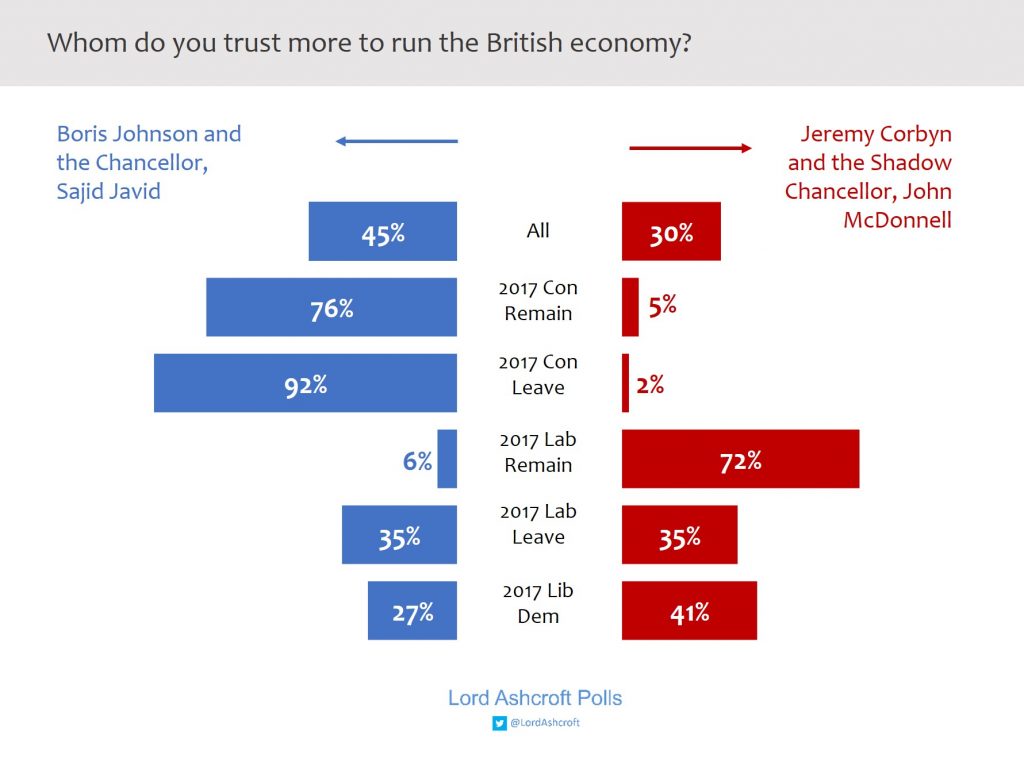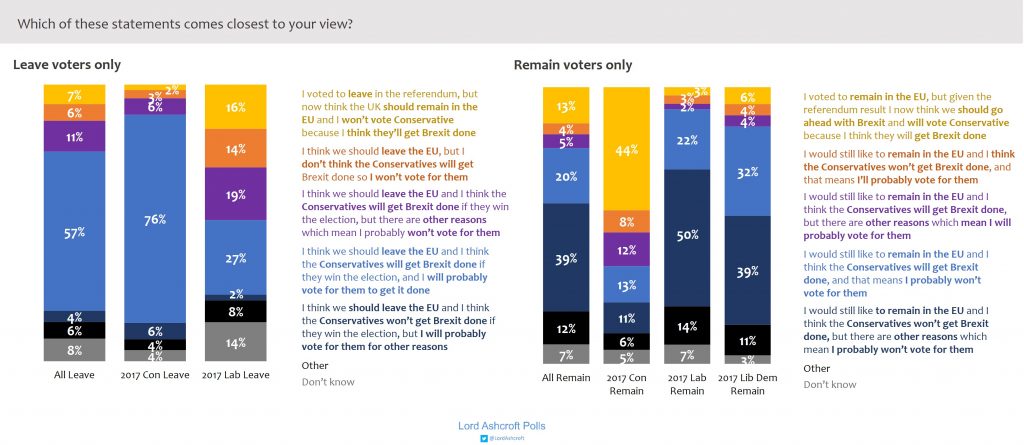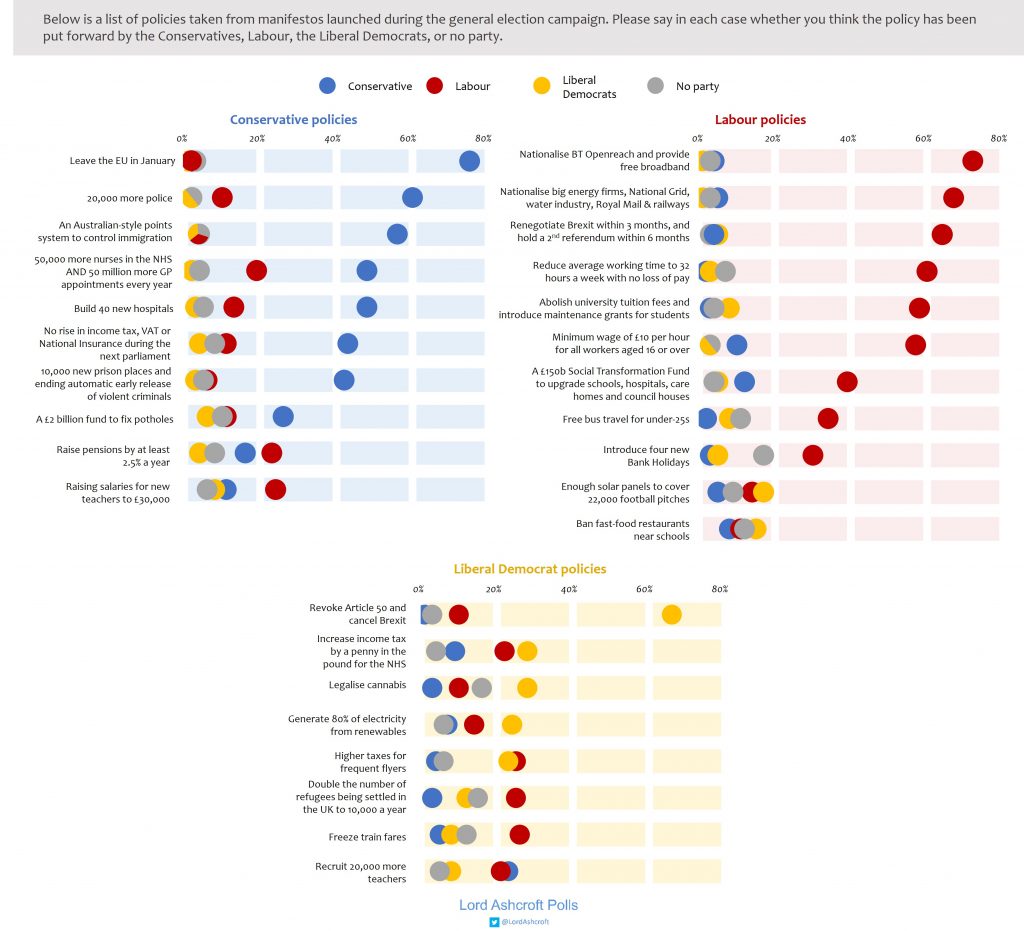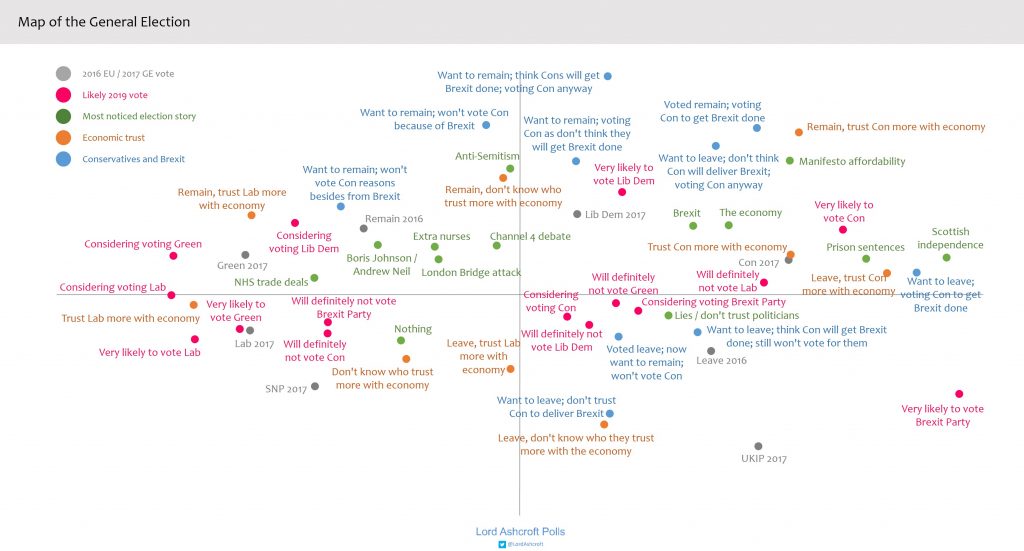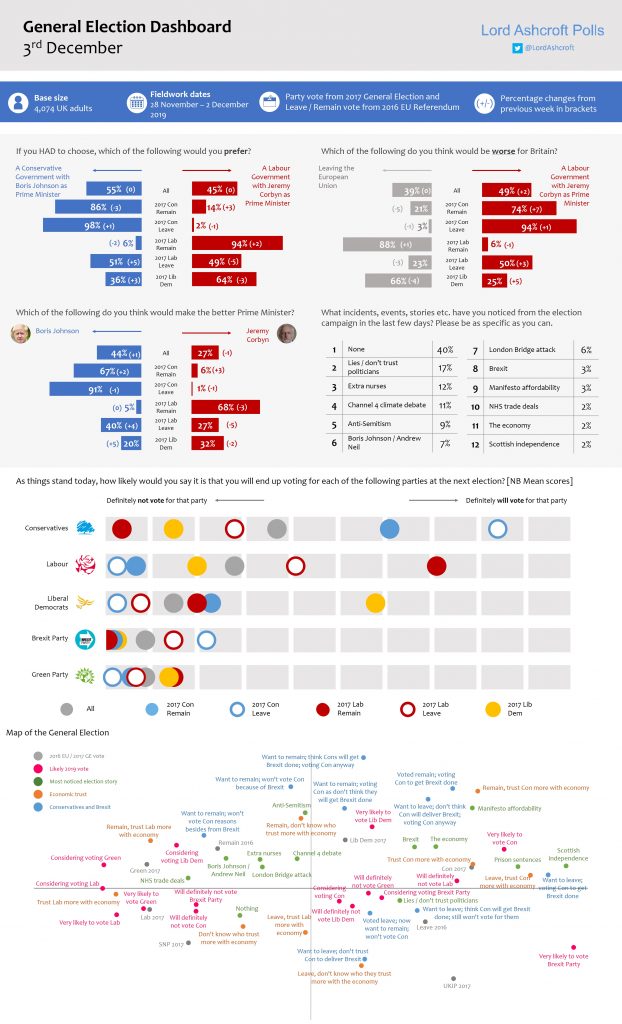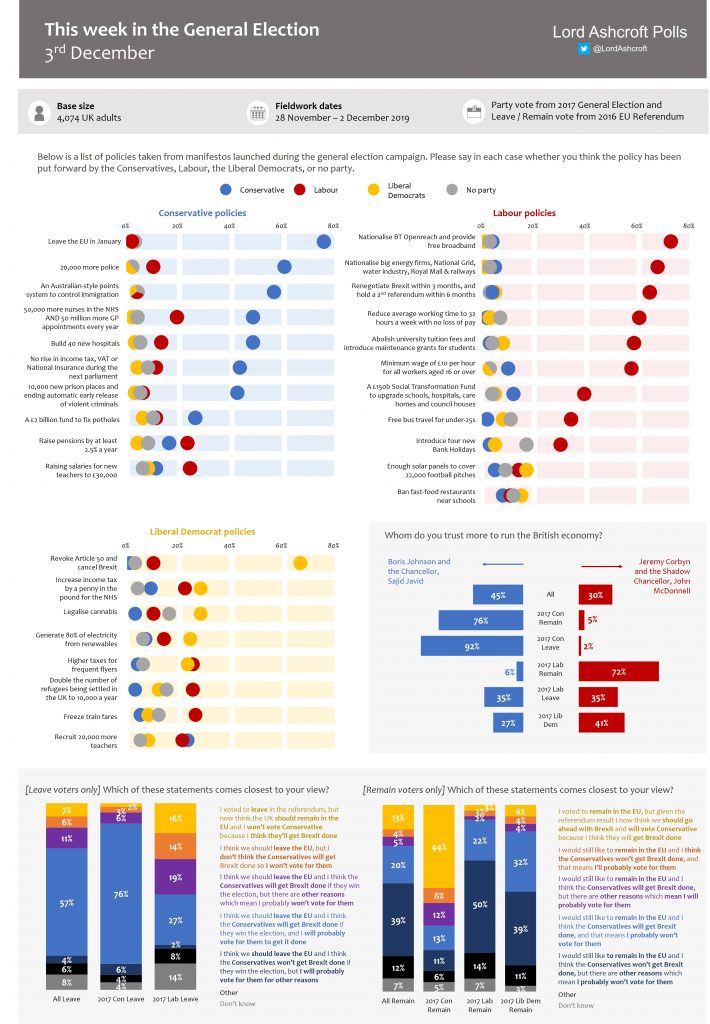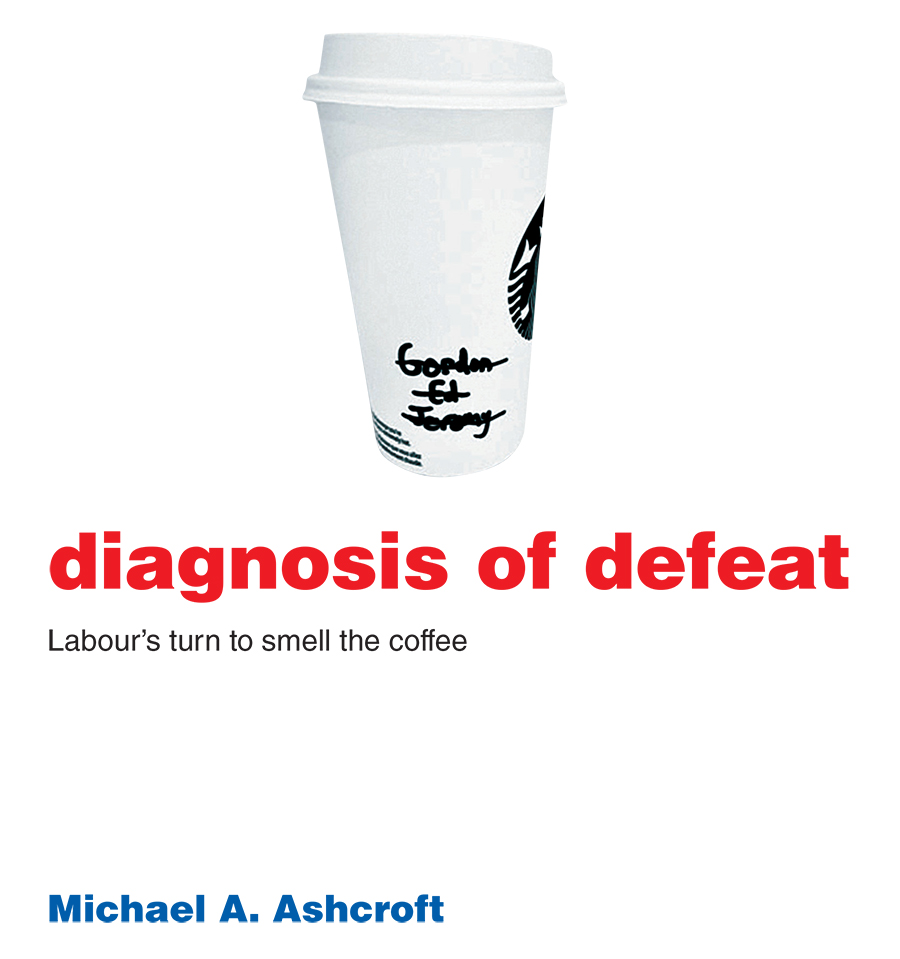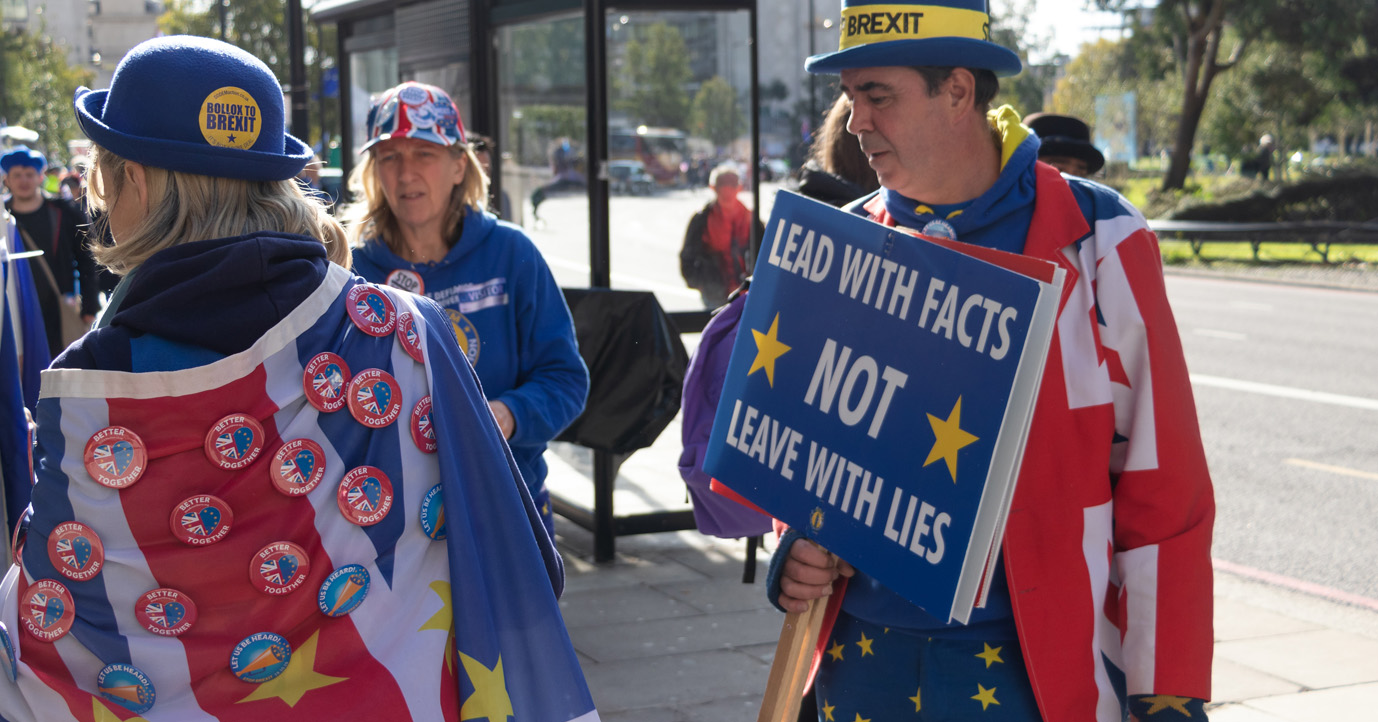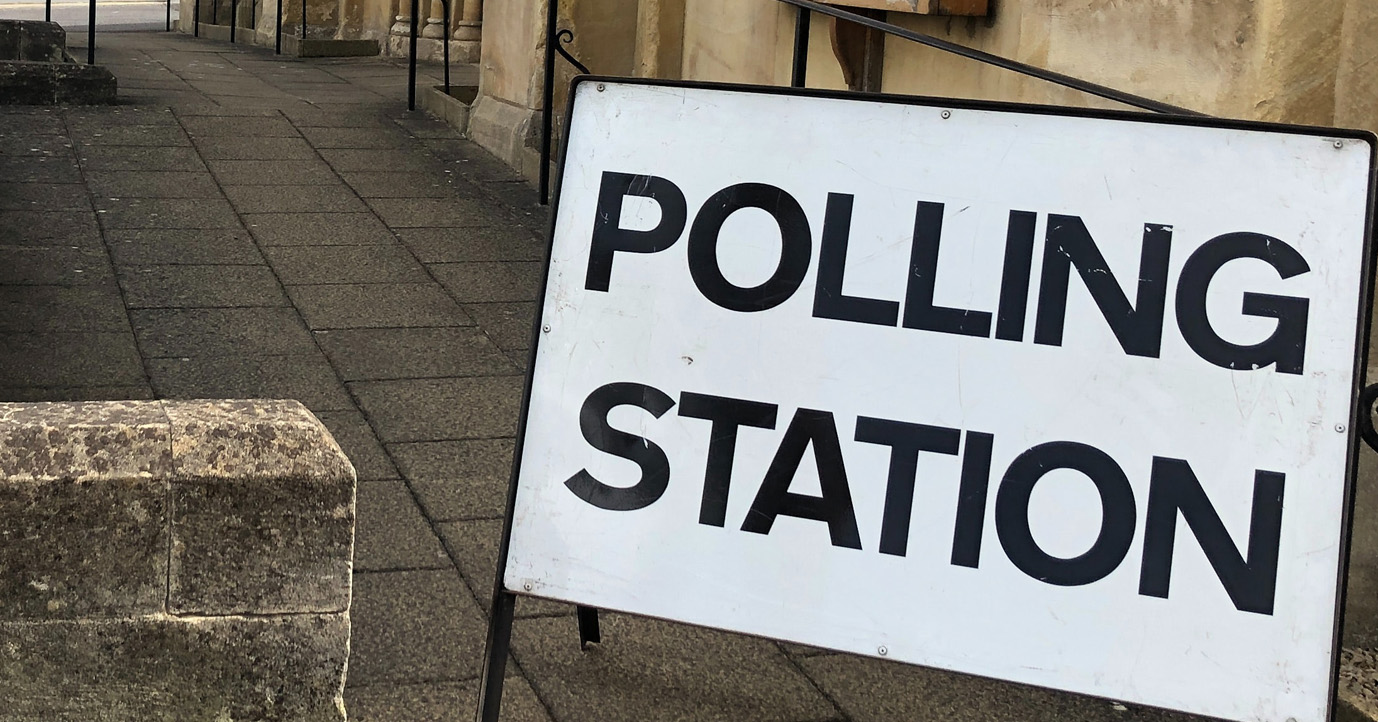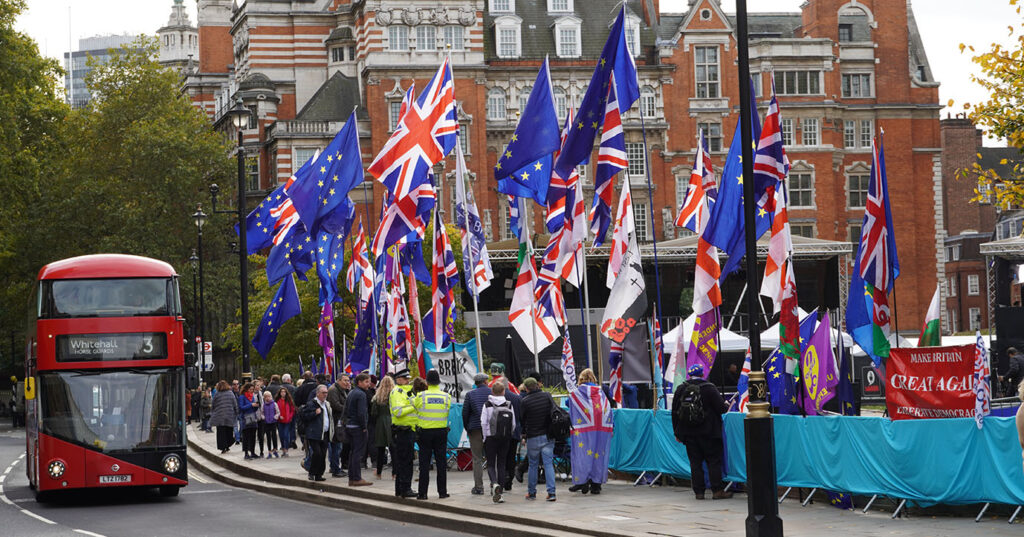
My latest 4,000-sample poll, conducted between Friday and Monday, finds little change in the overall picture, with Labour continuing to do better among its former voters than was the case at the start of the campaign.
The most noticed specific election stores of the last few days were promises of extra nurses, the Channel 4 climate debate, the Labour antisemitism controversy, and the question of whether Boris Johnson will be interviewed by Andrew Neil.
There was little movement from last week when we asked people how likely they were to vote for each party on a a100-point scale. The Conservatives’ average score is up slightly from 36 to 37/100, with the other parties unchanged: Labour on 28, the Liberal Democrats on 15 and the Brexit Party on 9. Remainers who voted Conservative in 2017 put their likelihood of voting Tory again at 61, down from last week’s 64 but up from the start of the campaign. Conservative Leavers put their likelihood up from 82 to 84, while Labour Leavers put their chance of voting Tory at 28/100 – up from last week’s 25 but still down since the election was called.
Overall, 2017 Conservatives’ likelihood of staying with the party was unchanged at 77/100, while 2017 Labour voters put their chance of voting Labour again at 61, up from 60 last week and 55 the week before.
Leave voters as a whole put their average chance of voting Conservative at 63/100, up from 61 last week. Remainers’ average likelihood of voting Labour is at 44, up from 43 last week and 40 the week before. Their declared likelihood of voting Lib Dem is down to 26, from 27 last week and 31 two weeks ago.
Boris Johnson’s lead over Jeremy Corbyn on who would make the best Prime Minister has widened slightly to 17 points (44% to 27%) from 15 points last week. The proportion of Labour Leavers naming Johnson is up slightly from last week at 40%, though still lower than when the campaign began. 84% of 2017 Conservatives name Johnson as the better of the two, while just 55% of 2017 Labour voters name Corbyn.
In a forced choice between a Conservative government led by Johnson and a Labour government led by Corbyn, the Tory lead is unchanged at 10 points (55% to 45%). Labour Leavers are closely divided, 51% to 49% in the Conservatives’ favour. 2017 Conservative Remainers’ preference for Johnson and the Tories is down slightly from last week but still very wide, at 86% to 14%.
The margin by which Jeremy Corbyn is seen as worse for Britain than Brexit has widened slightly from eight points to ten (49% to 39%). Half of all Labour Leavers say Corby would be worse (up slightly from last week but still below the 58% who said this at the start of the campaign), with 23% saying Brexit would be worse (or Corbyn would be better) and 28% saying they don’t know. Three quarters (74%) of Conservative Remainers think PM Corbyn would be worse for Britain than leaving the EU.
On the question of who is more trusted to run the economy, Boris Johnson and Sajid Javid lead Jeremy Corbyn and John McDonnell by 15 points (45% to 30%), down slightly from the 18-point margin at the start of the campaign. While the proportion of 2017 Conservative Remainers naming the Tory team is up from 70% to 76%, Labour Leavers are now divided at 35% to 35%, having preferred Johnson and Javid by 10 points three weeks ago.
Most 2016 Leave voters, including 82% of Conservative Leavers, say they will probably vote Conservative either to get Brexit done or for other reasons. However, nearly half of Labour Leavers say they will probably not vote Tory, either because they now want to remain in the EU (16%), because they don’t think the Conservatives would actually get Brexit done (14%), or because even though they think the Conservatives would get Brexit done there were other reasons why they can’t support the party (19%). Nearly one in four of all Leave voters fall into one of these categories.
13% of Remainers, including 44% of 2017 Conservative Remainers, say that given the referendum result we should go ahead with Brexit, and they will probably vote Conservative to get it done. A further 12% of Conservative Remainers say that even though they still want to remain in the EU and they think the Tories would take us out, they will probably still vote for the party for other reasons.
We showed people a series of manifesto pledges and asked which party they thought had proposed each one. The Conservatives’ most correctly-identified policy was to leave the EU in January (with 75% attributing it correctly), followed by 20,000 more police (60%) and an Australian-style points system to control immigration (56%). Just under half (48%) correctly assigned 50,000 more nurses and 50 million more GP appointments, and 40 new hospitals.
The policies most often correctly attributed to Labour were to nationalise BT Openreach and provide free broadband (72%), nationalise utilities, Royal Mail and the railways (67%), renegotiate Brexit within three months and hold a referendum within six (64%), and reduce average working time to 32 hours a week with no loss of pay (60%). The pledge to build enough solar panels to cover 22,000 football pitches was thought more likely to have come from the Lib Dems.
Revoking Article 50 and cancelling Brexit was the only widely recognised Lib Dem pledge (66%). The next most correctly attributed policies were legalising cannabis and putting a penny on income tax for the NHS (both 28%), and generating 80% of electricity from renewables (24%). Doubling the number of refugees, freezing train fares and higher taxes for frequent flyers were thought more likely to have come from Labour, while both Labour and the Conservatives were thought more likely to have proposed recruiting 20,000 more teachers.
Our map of the campaign shows how different issues, attributes, personalities and opinions interact with one another. The closer the plot points are to each other the more closely related they are. This week we can see that some of the most noticed stories – notably the Johnson-Neil interview stand-off, the Channel 4 climate debate and the question of NHS trade deals, were more likely to have been registered by voters in Labour/Lib Dem territory. Those in the Conservative-leaning sector are more likely to mention stories on prison sentences, the affordability of spending plans, and Scottish independence. Leave voters who don’t believe the Conservatives will actually deliver Brexit and don’t know which party to trust with the economy are positioned roughly halfway between Labour and Brexit Party terrain.

